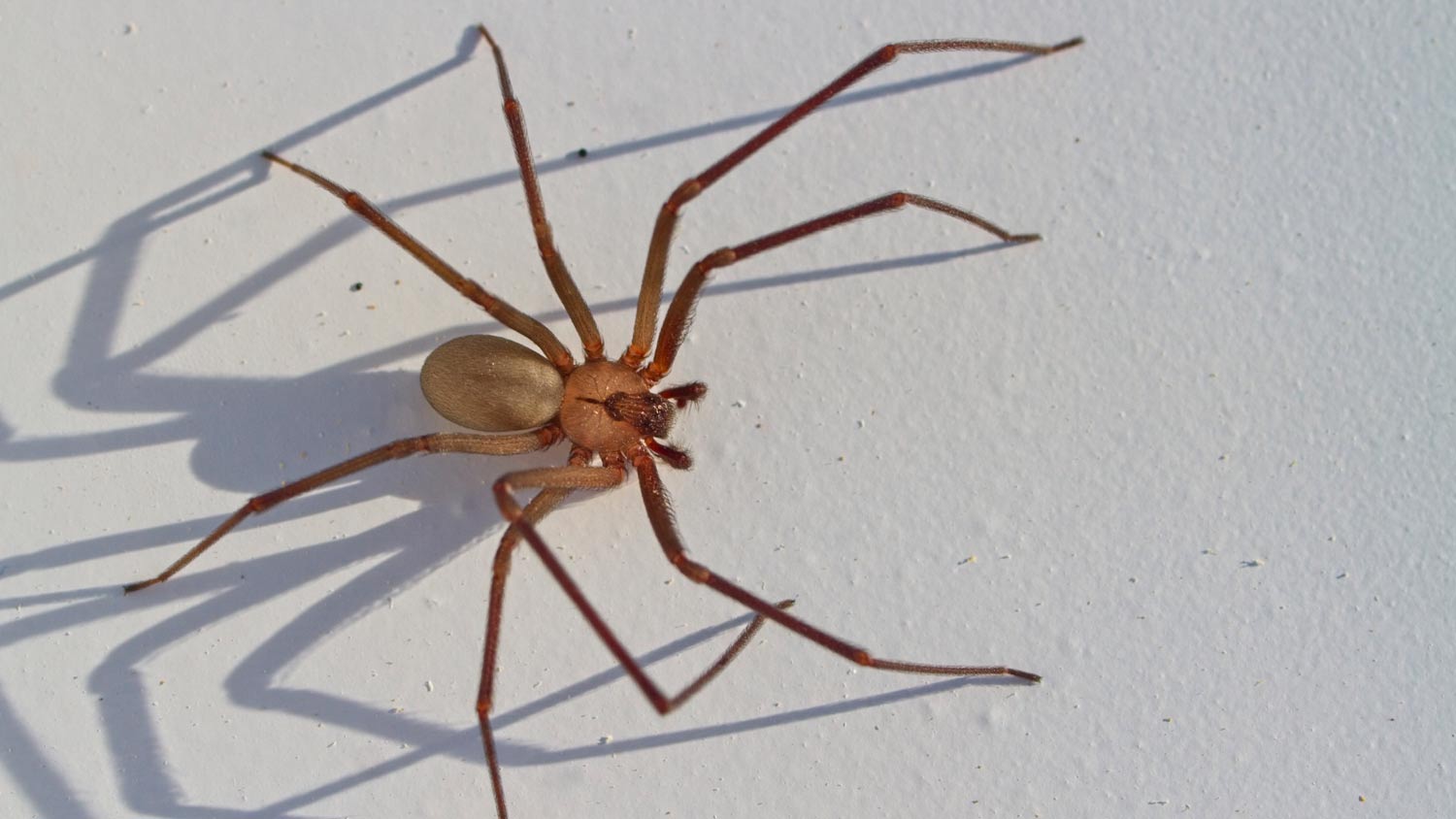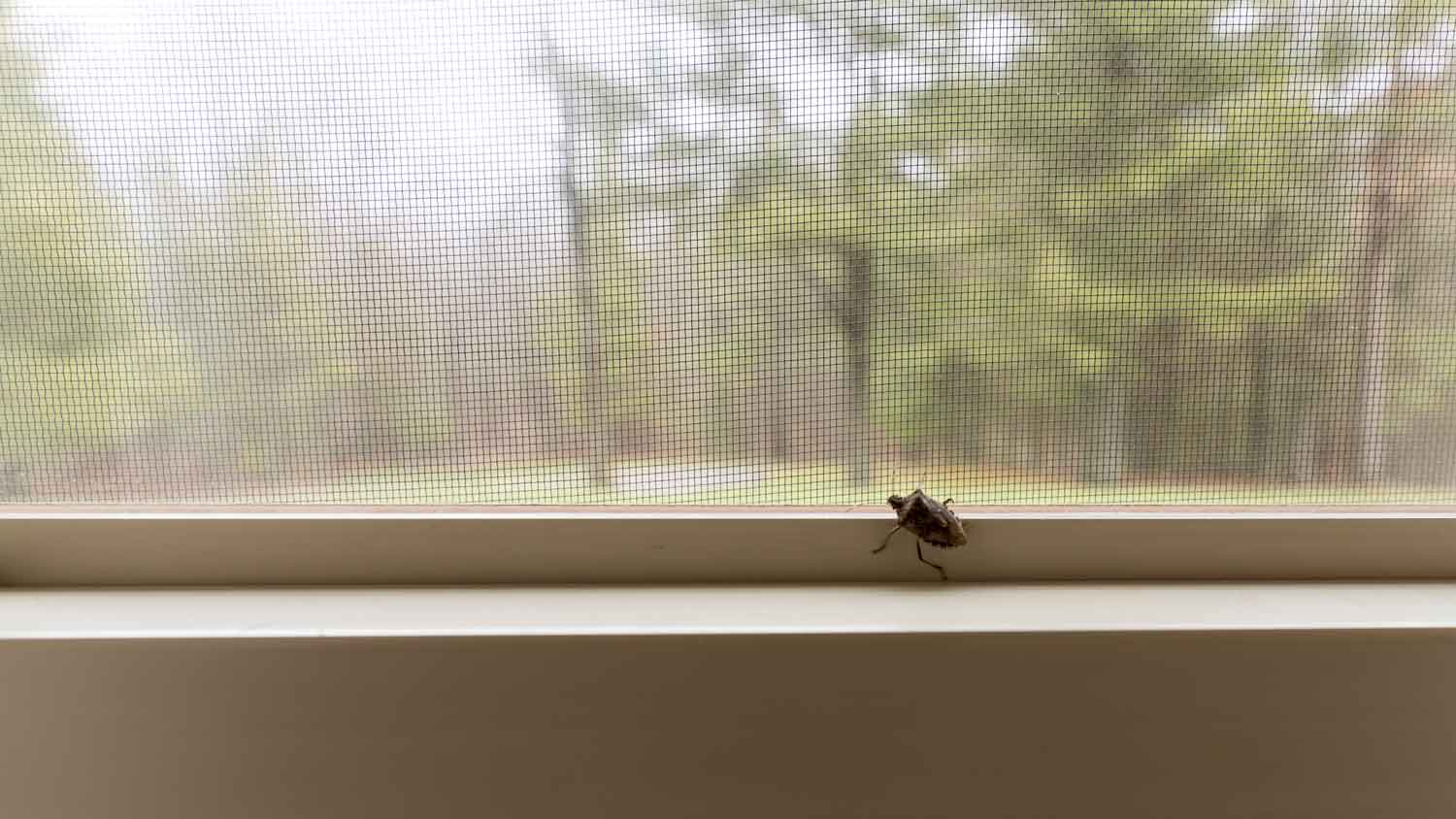
Whether you have bugs, bats, or rodents invading your home, you’ll want to contact an exterminator quickly. Find out how much pest control costs in Columbus, OH.
These spiders are feared but are actually introverts


You might misidentify common house, hobo, or cellar spiders for brown recluse spiders, while a local spider control specialist can accurately identify them.
While a professional spider extermination costs about $100 to $500, we recommend calling a pro since brown recluse bites can lead to pain, fever, nausea, and necrosis.
An expert has the tools to check dark, tight, or high-risk spaces without putting you or your home at risk.
Spiders get a bad stigma, to say the least. However, one spider you don't want hanging around inside is the notorious brown recluse spider. This variety is dangerous if you suffer from its venomous bite, so it’s important to learn how to identify a brown recluse spider.
Learn the characteristics of these spiders so you can take action to hire a spider control specialist and get them out of your home as soon as possible.
The brown recluse is a venomous spider found in 16 U.S. states, primarily in the Southeast and Midwest. They range in size from around ¼ to ¾ inch, including their legs, which is less than the diameter of a quarter. Yet, they have big reputations because their bites can lead to pain, fever, nausea, and the notorious side effect of skin death, also known as necrosis.
Luckily, brown recluse bites are rare, and serious complications are even more uncommon. Fewer than 10 percent of brown recluse bites lead to necrosis. It's also worth noting that fewer than three U.S. deaths per year are caused by spider bites by all species in general.

Knowing how to identify a brown recluse spider (or any poisonous spider) can help you determine if you should seek medical help and when to call in an exterminator to reduce the risk of more hiding in your home. Check out the three main characteristics of a brown recluse spider:
You don't want to get too close when trying to identify a brown recluse, but you may be able to identify it by its number of eyes. They have six eyes arranged in three sets of two, known as dyads, instead of the standard eight. While there are other spider species with six eyes, the vast majority have eight, making this a stand-out feature for recluse spiders.
Many people advise to look for a "fiddle" or "violin" shaped mark to determine if it's a brown recluse spider or not. They are sometimes called "fiddlers" or "fiddleback spiders 'because they have dark, fiddle-shaped marks on their cephalothorax, essentially their head. However, several other spider species possess similar physical features, so the fiddle mark alone does not determine if a spider is a brown recluse, but it points you in the right direction.
A brown recluse spider's legs are light brown and uniform in color. They are a solid color with no bands or stripes and covered in fine hairs with no large spines. Their abdomens can be a uniform shade of tan to brown, and the "violin" will be a darker brown color. They do not have other markings, which can help identify if it's a brown recluse.
Bites from a brown recluse begin like that of many other spiders: reddened skin around two small puncture marks. However, within 48 hours the center of the mark can turn a blue or black color and possibly blister.
The affected area can also dry out and sink into the surrounding skin because fluid isn't flowing. Mild bites typically heal within three weeks, while more severe bites can continue breaking down skin tissue.
It's best to seek medical help if a brown recluse or other poisonous spider bites you. Some people even need treatment for spider bites that aren't venomous if they have a bad reaction from the bite.

One thing is for sure: Brown recluse spiders are the last thing you want lurking in the shadows of your house. Use these tips to prevent them from moving into your home.
While it's unlikely to eradicate recluse spiders completely, cleaning the house is a logical first step in tackling the issue. Brown recluses are "reclusive" so they like to hide in undisturbed spaces. Garages, closets, basements, and attics are some of their favorite spots. They even hide in clothing, shoes, boxes, and other dark areas.
This is a huge motivator to declutter your home. After all, dirty spaces, exposed food, and clutter are among what attracts spiders.
Bushes that are unkept and close to your home are an invitation for brown recluse spiders to live inside them. Trim bushes back so they don't touch your home, reducing the hospitality for this type of spider.
Removing vines and other plants that can be a haven for brown recluse spiders is a good way to keep them at bay. If you have wood piles close to your home, you should stack them in another location further away.
You can try various methods to repel brown recluse spiders. One way is to make and use a natural spider repellent.
A solution of equal parts water and vinegar will kill various spiders. Make sure to spray in dark corners and along crevices. You can also use essential oils like lavender, mint, lemon, and tea tree oil to stop brown recluses from returning.
Brown recluse spiders can be dangerous if they bite someone in your household. While these bites aren’t as common as other spider bites, you still want to proceed with caution if you try to identify them and exterminate them yourself. If you try the DIY route, you can purchase an insecticide online or at your local hardware store.
Another DIY method you can try is setting spider traps. Adhesive-based traps are affordable, easy to find in stores, and often pesticide-free. Simply place them in problem areas, and they will lure brown recluses and other spiders.
While you can try to tackle your brown recluse problem yourself, the best way to get rid of them is to hire a spider exterminator near you to take on this task. Brown recluse spiders can be tricky to get rid of and you don't want to risk getting bit or the possibility of getting infested if they aren't exterminated properly.
The average spider exterminator cost ranges from $100 to $500, but keeping your home safe from these venomous pests could be well worth it.
From average costs to expert advice, get all the answers you need to get your job done.

Whether you have bugs, bats, or rodents invading your home, you’ll want to contact an exterminator quickly. Find out how much pest control costs in Columbus, OH.

Termite damage repair costs can vary greatly based on the damage severity and location. Learn more about the associated costs of this project with our guide.

Bats may have their benefits, but you don't want them taking up residence in your home. This guide will help you understand bat removal costs.

Think you might have a cockroach problem? Learn how to get rid of roaches and spot common signs of infestation in this guide.

Stink bugs are annoyingly persistent, but there are ways to fight back. Learn how to exterminate stink bugs in the house and prevent them from coming back.

Taking on a flea infestation means destroying the source—their eggs. In addition to calling the pros, there are some DIY tricks for how to get rid of flea eggs.